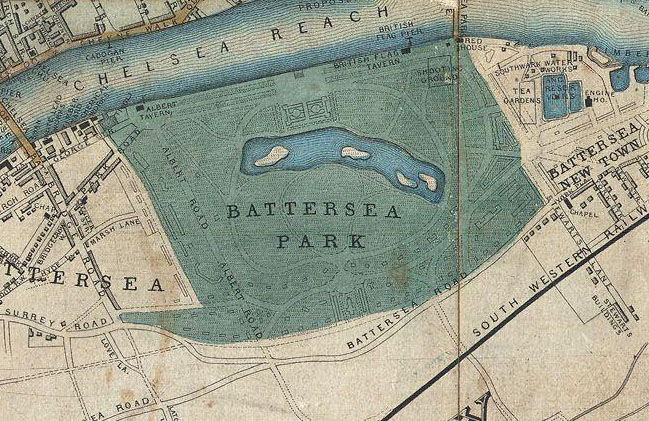
When Mozart was eight years old, he went on tour. That’s how you roll when you’re eight and you’re Mozart.
Accompanied by his awesome dad, Wolfgang hit 17 cities, all the usual suspects on the European drawing room circuit; Paris, Vienna, Rome, etc.
Their last stop was London. If I walk out my door this morning and hang a right, it will take me 13 minutes to get to 180 Ebury Street where Leopold and Wolfgang ended up living for about a year. Mozart wrote his very first symphony at 180 Ebury Street, aptly titled Symphony No. 1.
Say I decide to extend my hypothetical morning walk. Let’s say I swing by Gail’s Bakery and purchase a warm custard croissant and a hot cappuccino, and I think we can all agree that I should hypothetically do this. If I head south toward the Thames, it will take me 27 minutes to arrive at Cheyne Walk, slightly longer if my body feels weak on account of that demonically good croissant, so … Let’s say it takes me 35 minutes.
Cheyne Walk is just a quarter-mile long the way a lot of streets here are just a quarter-mile long. It runs along the north bank of the Thames between the Albert Bridge and Battersea Bridge, and Cheyne Walk is a lovely, lovely place, indeed. In spring, wisteria grows so high along some of the buildings it seems to pour down from the top; in autumn, well-manicured hedgerows are blanketed with crimson and gold-edged leaves, wide and fat and crispy, that sift down from the oak trees overhead. The apartment buildings would be imposing if they weren’t so charming, but they can’t get away from it. You might see a marmalade cat peeking through one of the tall, leaded-glass windows; all the pediments and pilasters are rounded; all the brick chimneys were clearly built to accommodate Santa Claus. Who wouldn’t want to live, at least for awhile, on Cheyne Walk?
The street has existed for about 300 years, so a lot of people have lived here. They have eaten their breakfasts, played their records, written and received letters, gone to sleep and gotten out of beds in these buildings. And it happens that a few Cheyne Walk residents made quite a name for themselves before, during, or after they lived here. This short street is notable not just for its beauty, but for all the notable people who lived on it. Dig:
George Eliot, author
J.M.W. Turner, painter
Dante Gabriel Rossetti, painter
Thomas Carlyle, philosopher
Bertrand Russell, philosopher
W. Somerset Maugham, author
J.M. Whistler, painter
Hilaire Belloc, poet and historian
Sylvia Pankhurst, superstar suffragist
Henry James, author
T.S. Eliot, poet
Amazing, right? And that is in no way an exhaustive list of all the remarkable people who had/have addresses on Cheyne Walk — google it and you’ll see. But the names up there mean the most to me because those people produced work that resolves tumblers in the combination locks of my brain. Even better, all that work was completed and all those people were dead way before I was even born.
This is infinitely comforting to me.
George Eliot knew all about heartache way before I ever went through a breakup, and what she wrote about love was waiting for me. Rossetti’s paintings of female flawlessness existed long before I looked in the mirror and admitted, as I did the other day, that I’m not so young. Just as the bloom of youth in La Ghirlandata is eternal, so is the vague despair I feel when I discover that my maiden days are over. Countless 40-something women have looked at La Ghirlandata and felt this; to join their club is both a defeat and a relief. I’m not alone; none of us are. Books and paintings that stand the test of time remind me that as special as I am, I’m not so special. There’s pure encouragement in it, if you’re open to it.
London does the same thing for me. Did you know that London is 2,000 years old? Two thousand.
I didn’t know that until recently, but it’s true: In 43 AD, the Celts who were loafing around were sacked by the Romans, who established the outpost they called “Londinium”. From there followed more sacking, and fires, plagues, wars, revolution, political chaos, etc. And now, 2,000 years later, here we are, strolling down Cheyne Walk with croissant crumbs on our jacket.
London has endured and that endurance makes me feel good, cuts me down to size in the best possible way, just like La Ghirlandata. London is an old place. It’s seen my type before. It didn’t rejoice when I got here and it won’t weep when I leave, because London doesn’t care about me — or you — that much. Not in the same way that New York City doesn’t care about one person. New York City doesn’t care about you because it’s doesn’t have time for you, and this feels hostile, like the way a mean girl treats you in the cafeteria. London doesn’t particularly care about you but London has nothing but time, so it might decided to watch you as you about your day. And, because it’s seen everything, if you screw up — when you screw up — it’s not inclined to laugh at you. There’s nothing new under the sun and besides, London is tired. London doesn’t want to laugh at you; London wants its slippers and its cuppa. Do this or don’t, London says; try this or don’t. Be a person in London for a brief flicker of time, dear, if that’s what you want. Then London gives you a pat and turns her great, heavy head to the next upstart to eventually them the same thing.
Being in an old city like this — being in London — makes me feel like I’m part of the human race, no more, no less. Now that I’ve felt it, finally, I confess that I don’t particularly want to leave. With the exception of Chicago, the other cities I’ve lived in made me feel like I was auditioning for them. In London, I’m just cast.
I thought this second half of the first post about London would lead off with how I ended up here, but Mozart and Cheyne Walk got in the way. The reason isn’t so crazy: The company Eric is with has a London office, and the opportunity arose for him to work on a project here for a few months. We arrived in August; we leave the first week of December.
I love it here. A lot. Like, an alarming amount.
